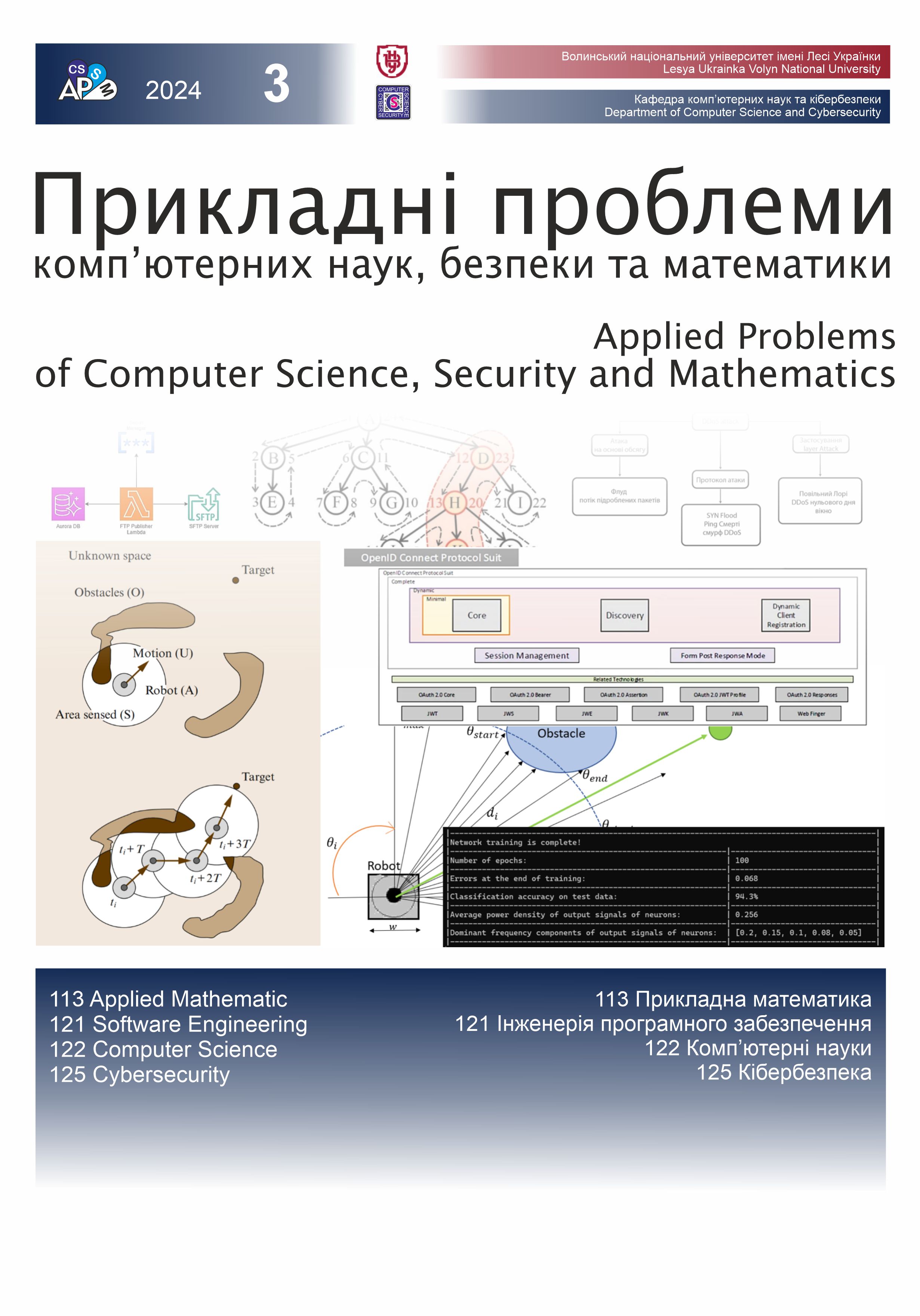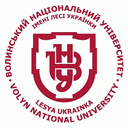MATHEMATICAL MODEL OF MODIFIED REAL-TIME OBSTACLE AVOIDANCE METHOD BASED ON LAPLACE ARTIFICIAL POTENTIAL FIELD
Keywords:
robotics, obstacle avoidance, artificial potential field methodAbstract
In the domain of robotics, a critical area of focus is autonomous mobile robots. These are sophisticated machines engineered with the ability to traverse through space autonomously, and endowed with the capacity to execute specific decisions in a real-time context. This implies that these robots can function independently, devoid of human intervention, and can adapt to their environment by making decisions predicated on the real-time data they acquire.
A fundamental component of the software infrastructure in such machines pertains to the algorithms for path planning and obstacle avoidance. These algorithms are pivotal as they endow the machines with capabilities such as automatic parking, circumventing emergency situations on the road, and even achieving full autonomy.
This highlights the complexity and sophistication of autonomous mobile robots and underscores the importance of ongoing research in this field. The development and refinement of effective obstacle detection and avoidance algorithms continue to be a key focus in robotics research, with the aim of enhancing the safety and efficiency of autonomous mobile robots. The Artificial Potential Field (APF) method is a classic technique in the field of robotics, particularly for path planning and obstacle avoidance. In the APF method, a virtual potential field is created where the target location and any obstacles in the environment generate attractive and repulsive forces, respectively. The robot, or autonomous agent, is then guided by these forces. It experiences an attractive force towards the target and a repulsive force away from obstacles. The robot moves under the action of the resultant force [1].
The subject matter of the article is a mathematical model that modifies the method of artificial potential fields, incorporating the use of Laplace functions. The method that has been developed is capable of identifying obstacles and calculating the likelihood of the robot colliding with these obstacles. The study delves into the process of deriving a mathematical model that can compute both attractive and repulsive fields. It also discusses the selection of equation parameters and a methodology for determining a safe trajectory for the robot’s movement. Future work aims to put the derived model to the test, both in a ROS2/Webots simulation environment and on an actual hardware platform. This will provide a practical application and validation of the theoretical model.
References
Katona, K.; Neamah, H.A.; Korondi, P. Obstacle Avoidance and Path Planning Methods for Autonomous Navigation of Mobile Robot. Sensors 2024, 24, 3573. https://doi.org/10.3390/s24113573
Bruno Siciliano, Oussama Khatib, “Springer Handbook of Robotics”, 2nd Edition, 2016.
Xiaojing Fan, Yinjing Guo, Hui Liu, Bowen Wei, Wenhong Lyu. (2020 Apr). Improved Artificial Potential Field Method Applied for AUV Path Planning. Mathematical Problems in Engineering. Mathematical Problems in Engineering. [Online]. Available: https://doi.org/10.1155/2020/6523158
Jang-Ho Cho, Dong-Sung Pae, Myo-Taeg Lim, Tae-Koo Kang. (2018 Aug). A Real-Time Obstacle Avoidance Method for Autonomous Vehicles Using an Obstacle-Dependent Gaussian Potential Field. Journal of Advanced Transportation. [Online]. Available: https://doi.org/10.1155/2018/5041401
JF. Duhé, S. Victor, P. Melchior. (2021 May) ContribUtions on Artificial Potential Field Method for Effective Obstacle Avoidance. Fract Calc Appl Anal 24, 421–446 (2021). Available: https://doi.org/10.1515/fca-2021-0019
He Song, Shaolin Hu, Wenqiang Jiang, Qiliang Guo, Ming Zhu. (2022 Aug). Artificial Potential Field-Based Multi-UAV Formation Control and Target Tracking, International Journal of Aerospace Engineering, [Online]. Available: https://doi.org/10.1155/2022/4253558
Hao, G.; Lv, Q.; Huang, Z.; Zhao, H.; Chen, W. UAV Path Planning Based on Improved Artificial Potential Field Method. Aerospace 2023, 10, 562. https://doi.org/10.3390/aerospace10060562
Kownacki, C. Artificial Potential Field Based Trajectory Tracking for Quadcopter UAV Moving Targets. Sensors 2024, 24, 1343. https://doi.org/10.3390/s24041343
Sun, Yuan, Fu, Li, "Real-time Game Theory Based Artificial Potential Field Method for Multiple Unmanned Aerial Vehicles Path Planning," Proceedings of the 2018 International Technical Meeting of The Institute of Navigation, Reston, Virginia, January 2018, pp. 521-528. https://doi.org/10.33012/2018.15583
Li, H., Gong, D. & Yu, J. An obstacles avoidance method for serial manipulator based on reinforcement learning and Artificial Potential Field. Int J Intell Robot Appl 5, 186–202 (2021). https://doi.org/10.1007/s41315-021-00172-5
H. Li, Z. Wang and Y. Ou, "Obstacle Avoidance of Manipulators Based on Improved Artificial Potential Field Method," 2019 IEEE International Conference on Robotics and Biomimetics (ROBIO), Dali, China, 2019, pp. 564-569, doi: 10.1109/ROBIO49542.2019.8961506
Fang, Z. and Liang, X. (2022), "Intelligent obstacle avoidance path planning method for picking manipulator combined with artificial potential field method", Industrial Robot, Vol. 49 No. 5, pp. 835-850. https://doi.org/10.1108/IR-09-2021-0194
Downloads
Published
How to Cite
Issue
Section
License
Copyright (c) 2024 Ігор Берізка, Іван Карбовник

This work is licensed under a Creative Commons Attribution-NonCommercial 4.0 International License.



